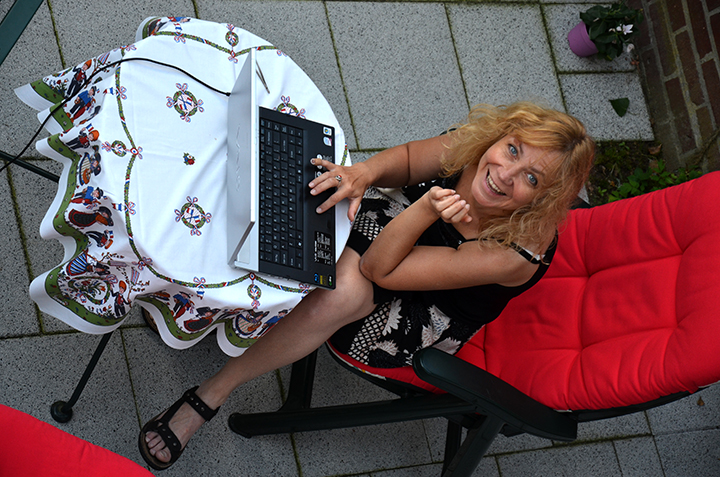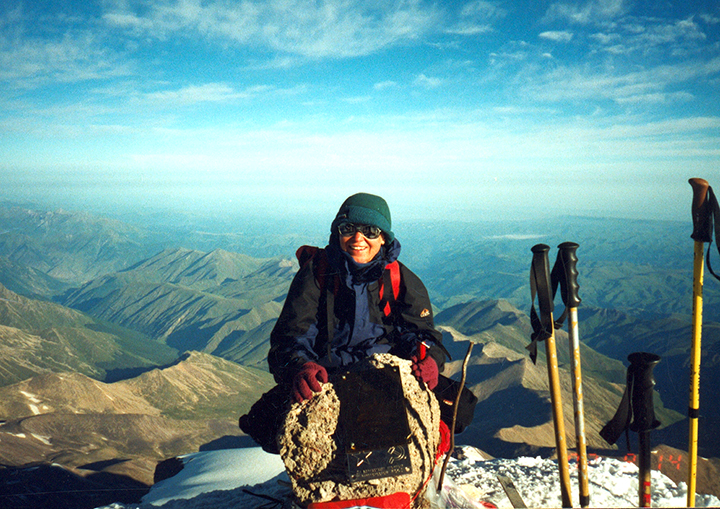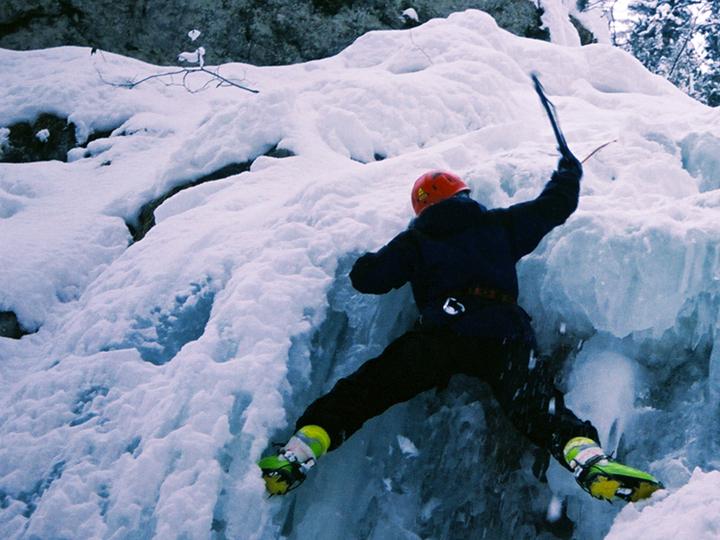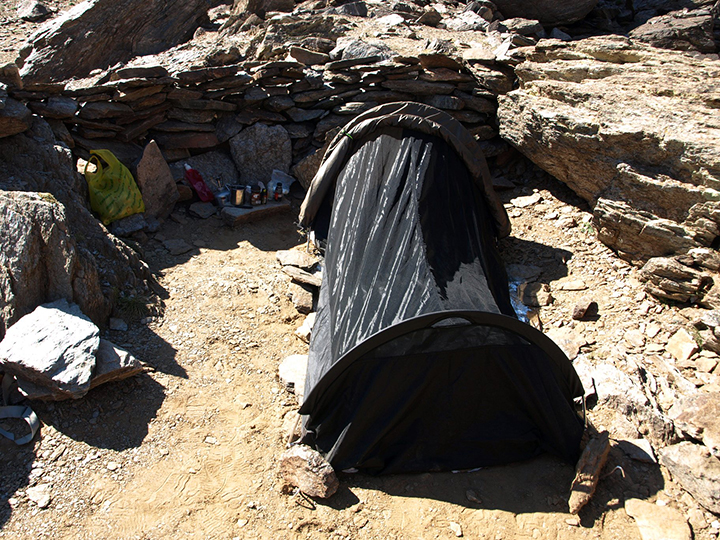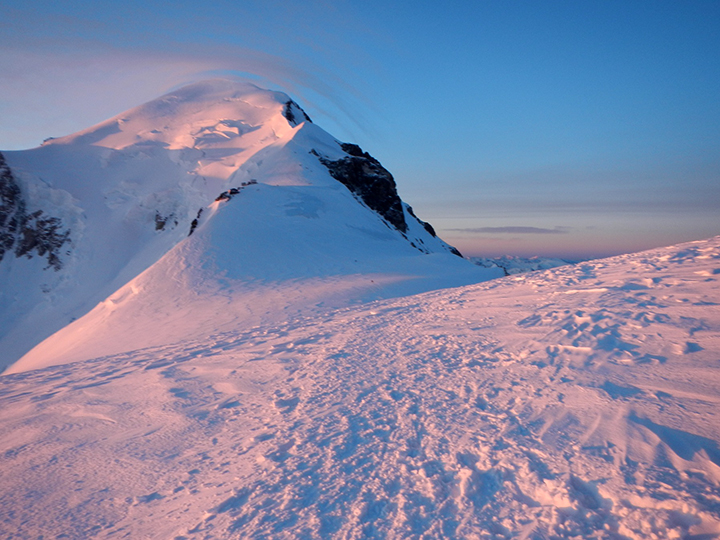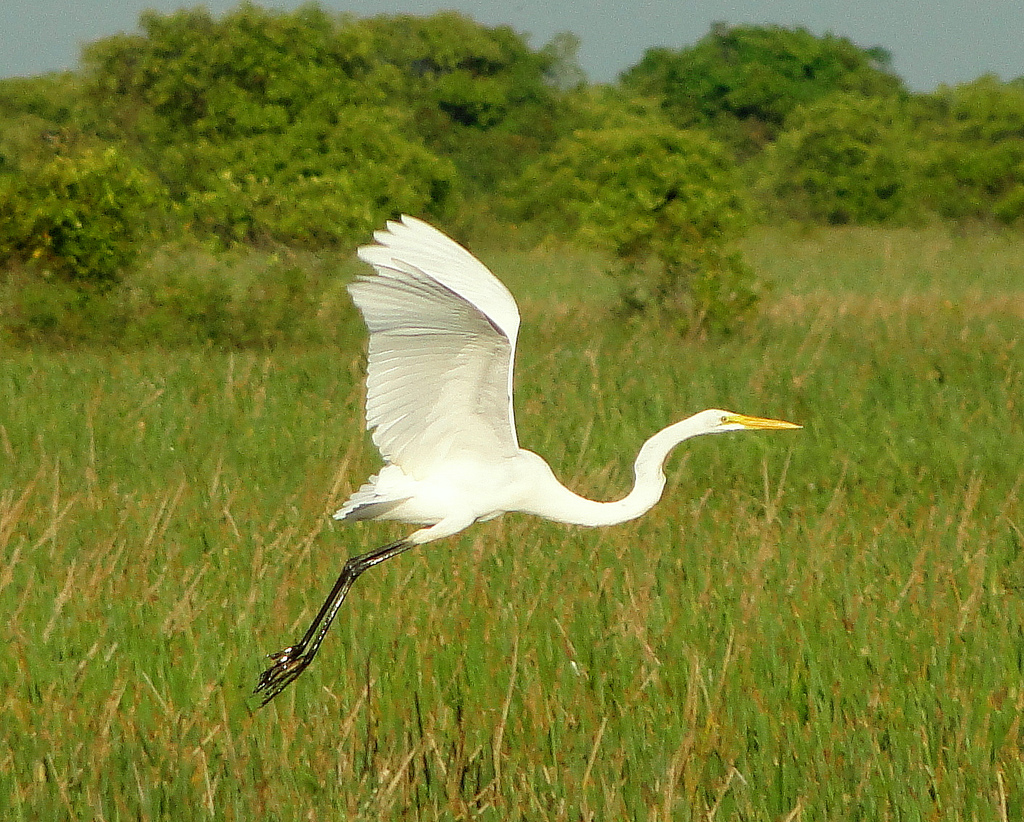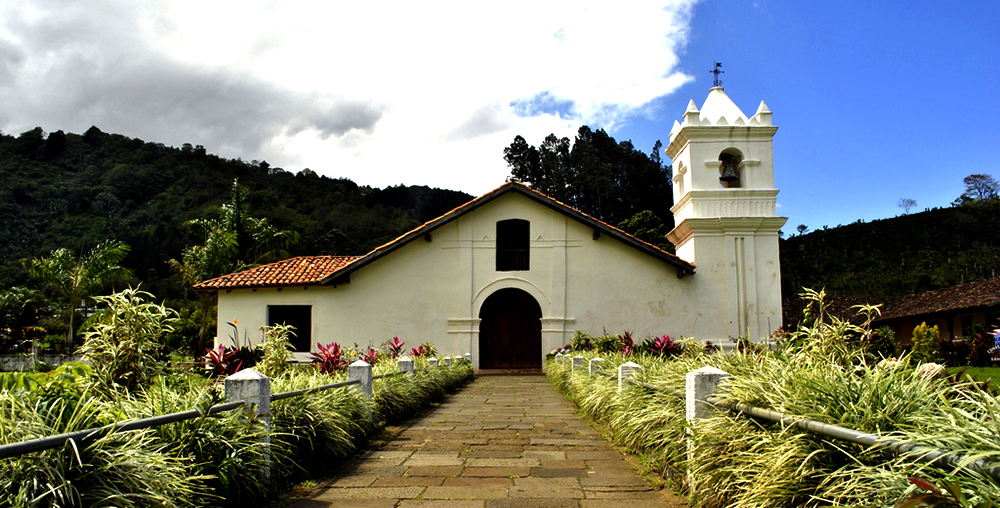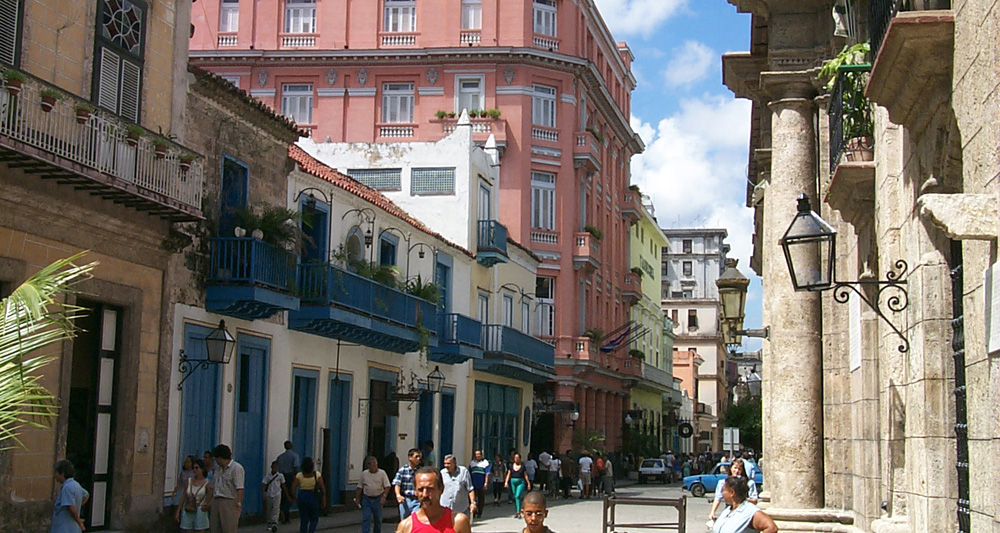Joanna Sokołowska-Gwizdka talks with Anna Borecka, a lonely climber, the hitchhiker traveling across continents and the author of the pioneering project „200 Peaks of the World”.
Joanna Sokołowska-Gwizdka:
You are the author of the project „200 Peaks of the World”. So far, you’ve already reached 50 summits. What is this project about?
Anna Borecka:
My goal is to reach the highest peaks in all countries in the world. This is a pioneering project, because nobody has done it yet. However, there are several more mountains than 200. In Colombia, there are two peaks of similar height: Cristóbal Colón and Simón Bolivar (5,775 m). It is not known which one is a little higher, so I have to climb both. However, in some African countries there are even three peaks to reach, because there are no accurate measurements, and different tribes believe that their area has the highest peak. I reached 50 peaks, mostly hitchhiking alone. I have been implementing the project for five years and in that period of time I ascended the 31 highest mountains. Some of them I have reached in teams and in different years. In total, I have in my collection such peaks as: Ararat (5,137 m), Demavand (5,610 m), Elbrus (5,642 m), Aconcagua (6,960 m) and all the highest peaks or points in European countries, except for Belarus. Recently, I added to that set Jabal Tubkal (4,167 m) in Morocco or Pico do Fogo (2,829 m) on Cape Verde. On the one hand, it’s a lot, and on the other hand, it’s a quarter of the project. However, I am an optimist. Since half a year ago, I left my job in a company in order to professionally pursue my mountain dreams – and now I am promoting a project – I think that soon someone will join me. And together, we can do more. Thanks to my publications and presentations, I already have followers in Poland and other countries, who transform their popular „Crown of Europe” into the „Crown of the Globe”. I am happy that I inspire others to get to know the world and fulfill their dreams at a high level. (Laugh)
However, the majority of enthusiasts of my idea prefer standards. Usually they organize quick and expensive trips to a particular mountain. I travel cheaply, but slowly, because I hitchhike and in several weeks I reach a few peaks in neighboring countries. Once the implementation of such a global project was a godly wish, and now it is a matter of experience, determination and finances. I’m good in the first two areas, but in the third, I still have to learn a lot. I have done many things voluntarily or for a small fee: presentations, articles, books. Now I dream of a long expedition for 3, 6 or 12 months to carry out the third stage of the project the 32 Peaks in America. Theoretically, I am already prepared, and physically probably too, because I train one and a half hour a day. I just need to make a big jump to find myself on the other side of the Atlantic.
Then, I will quickly and safely reach more volcanoes, hills hidden in the jungle or climb to impressive six-thousanders. I need a partner for some climbing, because the lonely climbing brings to much fear. So, I am approaching the next brake through in my life, but with the eyes of my imagination I can see only a mountain path towards the summit. I believe that someone will help me, someone who finds his role in the project „200 Peaks of the World”.
How do you prepare for expeditions?
Before the expedition to China, I spent as much as four months on preparations, and I spent three months on the way. It was my second lonely expedition and so far the longest. Now, I have a rule that every thing must be multifunctional, because otherwise that object doesn’t go with me for expedition. As the form of punishment it stays home, sits in a corner and waits for my return. Then I check again what I should take and what I should leave. Before leaving, I organize casting: I weigh, measure and choose the thing that is the lightest. In order to minimilize the load, I even cut off labels from the clothing. Instead of trekking shoes, I take running shoes. I pack much lighter, but thinner sleeping bag, than I should had brought with me. As to climbing equipment, I only take the necessary minimum: two carabiners, three tapes, one ice screw, crampons and ice ax. Otherwise, I take only affirmation and hope for a happy return. And of course, I get angry at myself when I do not have something in the mountains that I need, and when I’m soaking wet on the road or I’m freezing in the tent. I pack so meticulously in the minimalist manner, and I still have 20 kilos in my backpack.
I get information about the route and the mountains from the Internet, sometimes I also ask friends. I receive maps from my friend’s at „Księgarnia Podróżnika” (Traveler’s Bookshop). My daughter, Kalinka, finds cheap airline tickets to the island-states, and Kuba, my son-in-law, helps me with photography. An artist-traveler sometimes gives me good advice. Occasionally, someone else helps me to take care of different issues.
How do you care about health and beauty when traveling?
I take with me a mini towel and mini cosmetics, so it’s difficult to talk about taking care of beauty. After descending from the mountains, my pictures could scare children. Seriously! There is no mention of makeup in the mountains, but before returning to civilization, I must at least „make an eye” so not to frighten adults.
Until recently, I thought that the best cosmetics for a woman are mountain sun and wind. However, recently I changed my mind, because in fact it is a real SPA, which includes: solarium, sauna, facelift and massage – all in one. Often there are even water jets or cryotherapy – I have already frozen fingers and toes several times. In the Peruvian sun, I had a second-degree face burn, so my skin completely, but gradually peel off. At first, I looked like a peeled orange, but after sometime, I had a smooth face. In order to avoid the scars on my face, I protected myself with „Dermosan” – an ointment, which I received from my friend in the group. I was again lucky, although in the mountains you can find better cosmetics than in a theater wardrobe. Well, you get better make-up than the artists in horror movies. As the standard, it includes a face burnt by the sun-rays, swollen and with slight frostbite, lips shedding blood, damaged and torn hair. After a long trip, the process of returning to normal takes a few days. But the water in the mountains is wonderful, crispy and healthy, excluding glacier water. In Europe, the best water can be found in Iceland and Sweden, at least this is what the Scandinavian people say.
When did you discover your climbing passion?
Shortly after giving birth to my child. Seriously! But I will start from the beginning. My adventure with the mountains began when I was 12 years old. In the Beskids, in southern Poland, I was delighted with the beautiful view and said that I always wanted to walk in the mountains.
I ascended the first Tatras paths immediately after passing the final high school exams. In the third week of pregnancy, I reached Żabi Wyżni Peak (2,259 m) in Slovakia, and soon afterwards my daughter received the Tatra name. At that time, I was traveling in the Tatra Mountains with my husband and my sister. We were regular frequenters of the abandoned mountain hut in Rusinowa Polana, and there was a beautiful tree of viburnum (in Polish Kalina). This is how the idea of the name for our Kalinka was born. And then we raised the bar for the family. While climbing the rocks, Krystyna met her future husband, Robert, so we climbed in female and male teams.
When I became mother, my sister came to visit me and said she would enroll in a climbing course. I said, that I would also like to do it, but I was already a wife and mother. I was not yet 22 years old, but it seemed to me that many things come too late. However, my sister said that in life you always had to go forward, and I followed her advice.
In autumn, I attended a theoretical part of the course, and in the spring we had a practical course together in the Sokole Mountains, near Jelenia Góra. My daughter was nine months old, when I started to climb. It was an unusual way, because I was embalmed like a mummy. As a „Polish Nursing Mother” I could not deal with excess milk, but Krystyna found a way to do it. Then she was a nurse, so every day before climbing, she bandaged my torso. And so I passed the exam. I immediately caught the climbing bug. I were on a high doze of adrenaline. Sometimes I was scared, but also I was glad to overcome technical difficulties. At that time I weighed 53 kilograms, so I was curious to learn how to move vertically. I had only 62 centimeters at the waist, so the mountain climber sewing a climbing harness said he never had such a slim client.
Do you remember your first expedition?
First, there were climbing trips to the Sokole Mountains, then to the Tatras and the Alps, on weekends or holidays. We climbed with belaying, on climbing routes with difficulty of 3 or 4 degree. On the first climbing expedition I went to the Caucasus in 2003. In fact it was quite big, commercial group. In 26 days we climbed to a rock peak measuring 3,900 m, then to Uilpata (4,644 m), and yet we reached the top of Czeget Karabaszi (3,753 m), Kurmutau (4,045 m) and both peaks of Elbrus (5,642 m and 5,621 m). There was some climbing under the guidance of a professional instructor from Belarus, and a bit of trekking to not too difficult, but high top domes.
However, I have always been uphill in my life. Five days before this expedition, I had to call an ambulance. I stopped seeing, my heart was pounding and I was afraid that I would faint. I had anaphylactic shock because the antibiotic I was taking was probably rarely recommended by doctors. The ambulance doctor wanted to take me to the hospital, but I said that I had a paid holiday and I was leaving soon. I have not admitted that for almost a month I would carry 30 kg luggage in the Caucasus. Then I struggled to pack, and when I put on my backpack, I fell under his weight. Well, it worked after the third approach. In order to regain my strength, I slept during the two days of traveling by train. In North Ossetia, we slept in the old castle and there I had another attack, luckily weaker. Then one of the participants of the trip helped me, a former commando who knew the rules of first aid. In the mountains, I still felt weak and ready to faint, just before the avalanche hit us. However, I did not admit what was happening to me. I was surprised by the reaction of some people, because this avalanche was not so big. I was more afraid that I would reach my limit because of a wrong antibiotic than of small snow-ice nuggets.
Then there were other group expeditions: to the Aconcagua peak in Argentina (6,960 m), to Pisco (5,752 m) in Peru. There was also a climbing trip for seven four-thousanders in Monte Rosa massif, in Italy. Thanks to this, I gained experience needed for the implementation of lonely expeditions. I traveled through the Carpathians to Ararat, hitchhiked to China and climbed to over 6,000 meters, hitchhiked to the mountains in almost all European countries, and more recently even in Africa.
Once you climbed in a team, now alone. Did something happen that you decided on such courageous, independent expeditions?
From 2001 to 2006, I climbed in a male group, but in different, often incidental teams. Then I climbed to such peaks as Triglav (2,863 m), Mont Blanc (4,810 m), Grossglockner (3,798 m) and the mountains mentioned above. I also climbed the icefall of the Slovak Paradise and the Austrian Maltatal. It was a new element and a fascination with nature: 20 degrees below zero, frozen waterfall and incredible silence. Armed with ice axes and crampons and a little more equipment, I again climbed verticalily up. First, I learnt top rope climbing and then ice climbing in two- or three-member teams. The guys would not let me lead because they had 10-15 years of ice climbing experience and I was a “fresh-woman”. So, I solo climbed a few times, without belaying on small icefalls. Well, once or twice they let me lead climbing route.
In the summer of 2006, there was a breakthrough because I made an appointment online for climbing in the Sokole Mountains, with someone I did not know. And then I made a climbing route on which Darek, my husband died. Of course, I did not say anything about it to my new colleague. He learnt a little more about me, when we met about half a year later and I handed him my first book entitled „Mountaineering – life on high”. Here I described not only funny stories connected with team climbing and conquering the mountains until 2006, but also Darek’s accident, my trauma and the antidote which after many years proved to be mountains again.
In 2007, I decided that I would not climb anymore. However, in 2008, my friend died in the mountains, and his wife asked me to take care of the rescue operation and bring the body to Poland. Then I experienced another trauma, and when I recovered from it, paradoxically, I decided to organize a lonely expedition. I thought then, that at least no one else would die on it.
You speak about death in the mountains. When I was watching the documentary of Paweł Wysoczański „Jurek” about the mountaineer Jerzy Kukuczka, it filled me with emotions, from admiration to regret. I asked myself why alpinists get married, why do they expose their loved ones to life in eternal fear? You lost your husband in the mountains in 1992. I can not imagine the trauma that you had to go through, staying alone with your two-year-old daughter. And yet … again you reach the peaks.
Unfortunately, every climber exposes his loved ones to great stress, me too… and I consider it as selfish. However, by organizing lonely expeditions, I choose mountains within my physical capabilities, in connection with my gained experience and with climbing difficulties. In my project „200 Peaks of the World”, there are many tourist mountains, but those which I have to fight, are simply more respectable. These are the ones I like the most.
When it comes to Darek’s accident… Darek was 25 years old when he died, and I was 24 years old. My daughter was two years old and she covered me with a diaper while I cried curled up as ball. For many years I felt guilty that we went to climb in a team of four, and we returned in a team of three, that the child lost her father, that I live… Thanks to my mother I got up because she told me I should live for my daughter. It was only after fourteen years that I was completely out of trauma, just when I climbed the rocky road on which Darek died. I wrote about it in the book because it was my personal catharsis. I’m still emotionally connected with my daughter to this day. Sometimes we even change roles when she’s like mother to me, but more often we are friends.
What is it about lonely expeditions that they attract you so much?
I have several reasons for organizing lonely expeditions, such as freedom, curiosity about the world and people, and a notorious lack of money. That’s the truth: on the one hand, I am the organizer, leader and participant, so I do everything as I want, considering the scarcity of funds. On the other hand, I’m happy to learn about new countries and interesting people, and that I manage difficult conditions during hitchhiking or in the mountains. I also discovered new skills that I had no idea about. It is a rapid decision-making in dangerous situations, in contacts with people and in the fight against the elements. It is a total concentration during solo climbing in a foreign area. Also, I go through mental training before and during the trip: I keep repeating like a mantra that I only meet good people. Finally, it is the use of intuition. There are also beautiful meetings with people, with kindred spirits, who immediately seem familiar to me. There are fabulous landscapes, there is time for photography and reverie. It is this independence that appeals to me. Besides, no one buzzes over my ear, telling about his problems at the time when he should concentrate on the trail or the beauty of the surrounding world. The mountains are also a great place to purify the psyche from mundane matters and the body – from urban smog. Yes, some mountain trips should be prescribed to people. (Laugh) And I can write these recipes.
There are also unusual encounters with nature. Once, when I set up a tent by the lake, in the Sierra Nevada mountains, in Spain, at an altitude of 3,000 meters – the Spanish ibex came to me. She jumped on a large boulder and looked down at me. I was cooking soup on a tourist stove. This wild goat saw me, yet stood on a rock with an outstretched neck, inhaling scents. I carefully reached for the camera, but she was faster. It’s a pity, because she would have a beautiful portrait from a distance of two meters, as a profile picture on the Facebook. (Laugh)
Are mountains a kind of addiction for you?
In the mountains, I feel like at home. Many people are afraid of wild nature, the elements, hardships. They avoid inconveniences and dangerous situations. When I go to the mountains, I laugh from ear to ear. This is my paradise on Earth, because the mountains are holy. Only there, a man can see how small he is and that he is only a part of nature. Then everything seems more simple. You see the distance from many things in life. In the mountains, it comes to my mind, that I do not have to do anything, so I can do everything. I can finally accomplish my dreams.
There are also moments of horror, when I ask God to send to me at least one person. This is strange, but sometimes it is easier to climb the icy ridge, when someone is next to you. Even when he is a stranger and climbing alone. Although, I had an amazing experience on my way to Mont Blanc, during a snowstorm. This was my second meeting with this mountain because my main goal was to climb the Mont Blanc de Courmayer (4,748 m), the highest peak of Italy. It was quite steep, cold and slippery, and I was alone. In addition to the difficulties, I only had mini crampons with six teeth instead of ten. My hands were freezing to the ice ax and trekking pole, the crampon blades hardly caught ice and I was scared. For a moment there was a strange silence which fell upon me. I thought then it did not matter what was about to happen, because I had already left my mark there. Even if I fell from the ridge, I already belonged to that mountain just as it belonged to me. It was so obvious that I calmed down and moved on.
Are mountains addictive? I do not know. For me it is a call. At some point some mountain begins to follow me, so I have to go to them and say hello; get to know each other and have my own opinion about it. With the rest, I think with reciprocity. (Laugh) And seriously speaking, mountains are a good school of life, a science of freedom in extreme conditions.
The continuation of the conversation with Anna Borecka, about the countries traveled around, people met, adventures in the mountains, life goals and learning received from the mountains – will be released on …
Translated by: Anna Borecka, Ryszard Sawicki




